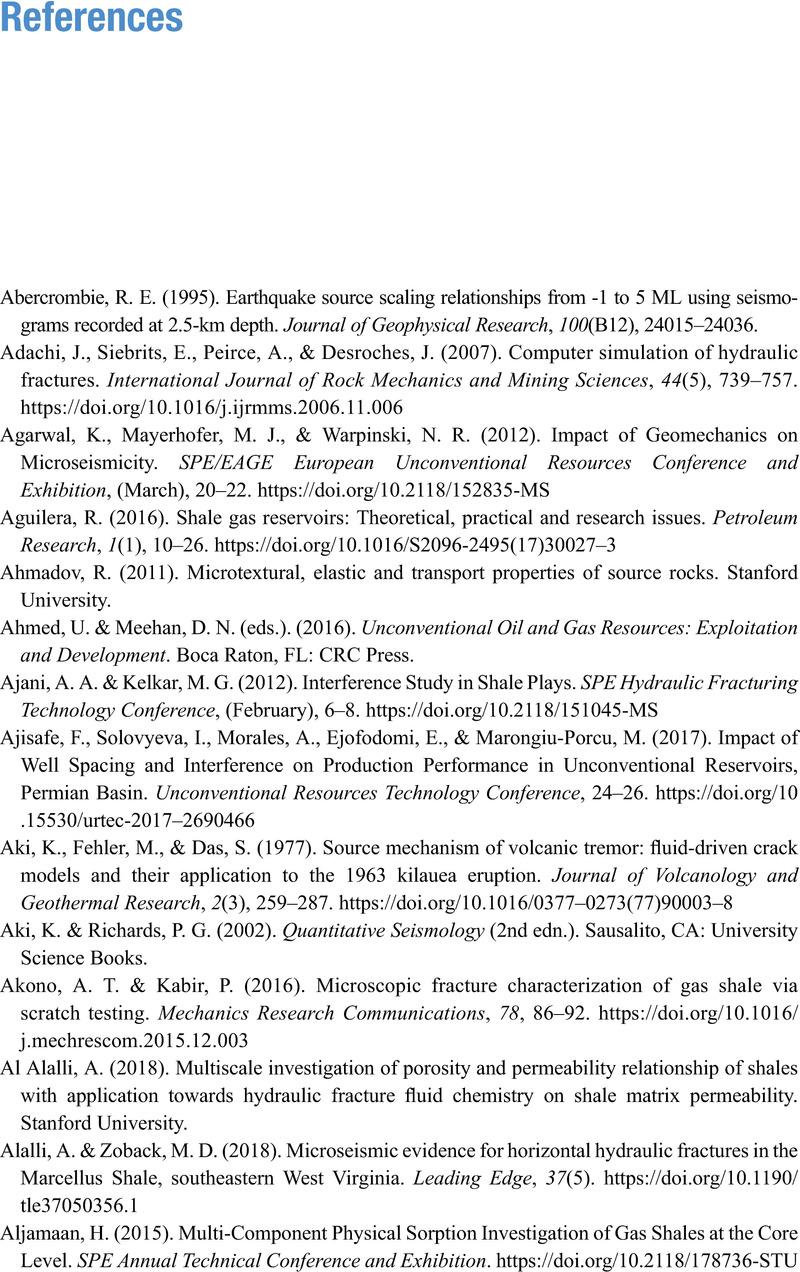Book contents
- Unconventional Reservoir Geomechanics
- Unconventional Reservoir Geomechanics
- Copyright page
- Contents
- Preface
- Part I Physical Properties of Unconventional Reservoirs
- Part II Stimulating Production from Unconventional Reservoirs
- Part III Environmental Impacts and Induced Seismicity
- References
- Index
- References
References
Published online by Cambridge University Press: 14 June 2019
- Unconventional Reservoir Geomechanics
- Unconventional Reservoir Geomechanics
- Copyright page
- Contents
- Preface
- Part I Physical Properties of Unconventional Reservoirs
- Part II Stimulating Production from Unconventional Reservoirs
- Part III Environmental Impacts and Induced Seismicity
- References
- Index
- References
Summary

- Type
- Chapter
- Information
- Unconventional Reservoir GeomechanicsShale Gas, Tight Oil, and Induced Seismicity, pp. 442 - 478Publisher: Cambridge University PressPrint publication year: 2019



